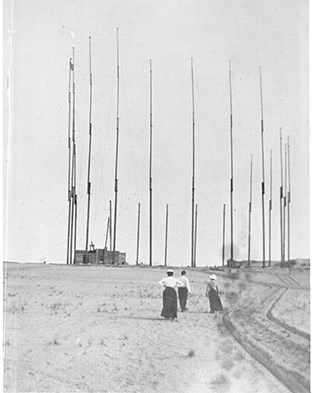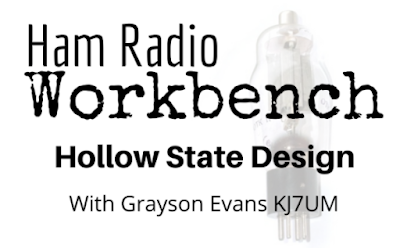On Sun, Aug 29, 2021 at 4:05 PM Bob Scott wrote:Hi Bill:
After listening to the latest Soldersmoke I thought you might find the Japanese concept of "kintsugi" (literally "golden joinery") interesting.
As a philosophy, kintsugi is similar to the Japanese philosophy of wabi-sabi, an embracing of the flawed or imperfect.[11][12] Japanese aesthetics values marks of wear from the use of an object. This can be seen as a rationale for keeping an object around even after it has broken and as a justification of kintsugi itself, highlighting the cracks and repairs as simply an event in the life of an object rather than allowing its service to end at the time of its damage or breakage, and can be seen as a variant of the adage "Waste not, want not".[13]
Kintsugi can relate to the Japanese philosophy of mushin (無心, "no mind"), which encompasses the concepts of non-attachment, acceptance of change, and fate as aspects of human life.[14]
Not only is there no attempt to hide the damage, but the repair is literally illuminated... a kind of physical expression of the spirit of mushin....Mushin is often literally translated as "no mind," but carries connotations of fully existing within the moment, of non-attachment, of equanimity amid changing conditions. ...The vicissitudes of existence over time, to which all humans are susceptible, could not be clearer than in the breaks, the knocks, and the shattering to which ceramic ware too is subject. This poignancy or aesthetic of existence has been known in Japan as mono no aware, a compassionate sensitivity, or perhaps identification with, [things] outside oneself.
— Christy Bartlett, Flickwerk: The Aesthetics of Mended Japanese Ceramics
73,
Bob KD4EBM
--------------------------------------------
I shared Bob's Kintsugi message with David, WA1LBP. David was one of the few radio amateurs in the ranks of the Foreign Service. He was in Okinawa during the early 1990s, when I was in Santo Domingo. For a time we both wrote columns in the "73 International" section of Wayne Green's magazine -- this made us "Hambassadors." David is a real scholar of difficult Asian languages. During my last years in government service I would sometimes cross paths with David at lunch time on the National Mall in Washington -- he'd be out there with a colleague, studying ancient Chinese poetry.
Here are David's thoughts on this:
Thanks, Hambassador Bill.
In Buddhism, muxin (in Chinese wuxin) is about freeing oneself from troubling thoughts, distractions, and selfishness and so attaining a calmness that is very aware of all that goes on at the same time. I suppose once free from distractions one can be more alert. So maybe not literally no mind but no-selfish-obsessed-mind
Amazing what one can find online. A distraction too I suppose!
Chan embraced this account of nonduality and Buddha-nature, but distinctively used it to qualify the meaning of Buddhist practice and the personal ideal of the bodhisattva. In the Platform Sutra attributed to Huineng, he insists that
meditation is the embodiment (ti) of wisdom, and wisdom is the functioning (yong) of meditation.
The point of Chan is to see one’s own “original nature” (benxing, 本性) and realize “authentic heartmind” (zhenxin, 眞心), and in doing so the dualities of thought and reality, of passion and enlightenment, and of the impure and pure all dissolve. Then,
true suchness (zhenru, 真如) is the embodied structure (ti) of thinking, while thinking is the functioning (yong) of true suchness. (Platform Sutra, 13–17)
To see our own original nature is to see that true suchness and thinking are as intimately related as the bodily structure of a horse and its customary activities. Just as the bodily structure of the horse establishes the conditions of possibility for grazing and galloping, it is only the proven evolutionary advantage of grazing and galloping in horse-like ways that have made this bodily structure possible. True suchness or ultimate reality is not a preexistent something “out there” that can be grasped intellectually or accessed through some mystical vision; it can only be enacted.
Huangbo Yixun (d. 850) describes this as demonstrating no-“mind” (wuxin, 無心) or freedom from conceptual impositions that would define or limit reality. But this is not a lapse into mental blankness or indiscriminate presence. Realizing no-“mind” restores our originally whole mind (yixin, 一心) that Huangbo qualifies as the “silent bond” (moqi, 默契) of “conducting oneself as all Buddhas have” (in Taishō shinshō daizūkyu, Vol.48, 2012.380b to 383c). Significantly, the term “qi” originally referred to notches or tally marks on a strip of bamboo that record the terms of a trade agreement and the bonding that Huangbo invokes is thus one of mutually entrusted obligation and responsibility. True suchness consists in the personification of the bodhisattva ideal of realizing liberating forms of relationality. Ultimate reality consists in enacting the morally-inflected nonduality of wisdom and compassion.
David
-----------------------------------------------------
I remember that it was George Dobbs, G3RJV who introduced us to the concept of Wabi sabi:
https://soldersmoke.blogspot.com/2010/04/homebrew-hero-george-dobbs-g3rjv.html
This philosophical embrace of imperfection and repair is very appealing to me. I am surrounded by old radios that bear the marks of wear, tear and repair. My homebrew radios are filled with imperfections (especially in the cabinetry). But Kintsugi tells me this is all OK. I accept it.
Thanks Bob. Thanks Hambassador David. And thanks to George Dobbs.































